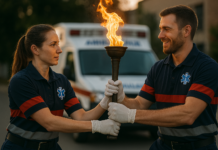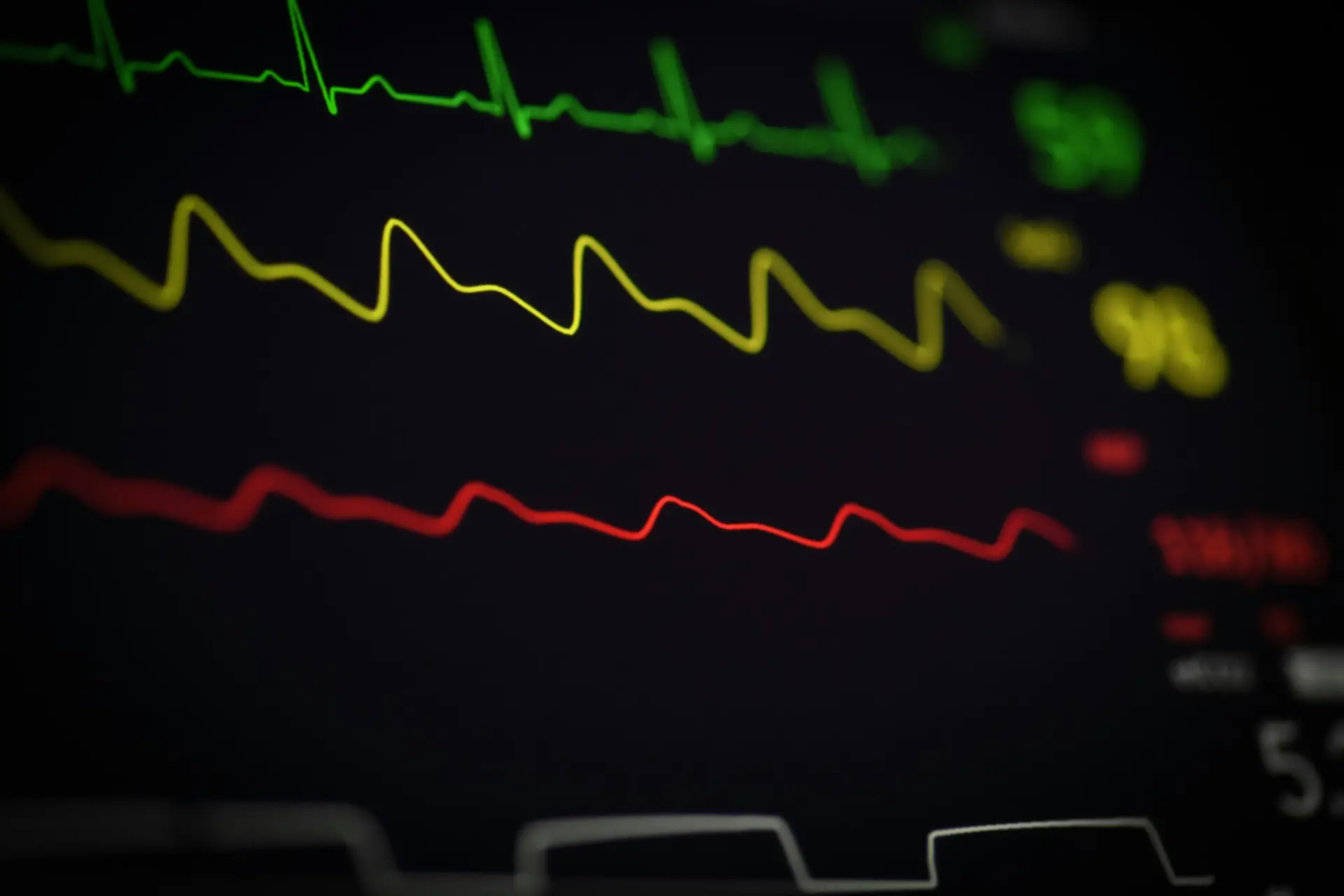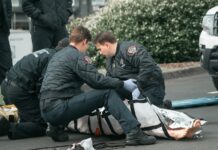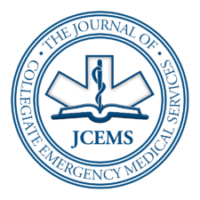The coronavirus 2019 (COVID-19) pandemic has resulted in the closure of college campuses across the globe.1 It is unclear how long institutions of higher learning will continue their campus closures. Many institutions, such as California State University, have canceled on-campus classes through fall 2020.2 Keeping students off campus, however, is likely depleting the available workforce of collegiate-based EMS (CBEMS) agencies. Additionally, campus closures may significantly reduce on-campus call volumes. As such, many CBEMS agencies have likely been unable to continue operational prehospital services. CBEMS agencies are therefore challenged to maintain the clinical skills of their membership and prepare for the eventual reopening of college campuses. They must also prioritize the wellness of their providers during this stressful period.
Maintaining Clinical Skills
The mastery of clinical skills deteriorates with time.3 During normal operations, EMS providers can refresh their competency through repetitive skill utilization. For example, the acquisition of a blood pressure is a technical ability that can be used during the vast majority of patient encounters. When not in operational service, however, members of an EMS agency are unlikely to utilize this skill with any frequency to maintain proficiency. In addition to psychomotor abilities, clinical decision making is foundational to prehospital care.4 The lack of patient care experience may lead to an erosion of this crucial skill as well.
CBEMS agencies are therefore faced with the prospect of needing to maintain these important skills among their membership, many of whom may no longer be located nearby. Leaders must innovate strategies to mitigate skill degradation so that prehospital providers are more readily able to provide care when their agency returns to active duty.
Remote Learning Opportunities
With the closure of campuses, many universities have adopted online learning modalities.5 CBEMS training officers may need to similarly utilize analogous technology to maintain the skills of their members. In-person classroom learning and skills labs have long been foundational to teaching clinical skills. Social distancing and the closure of college campuses, however, makes traditional learning modalities impossible. Some medical schools, for example, are now teaching future physicians via virtual learning activities.6
Likewise, CBEMS agencies may need to run simulated cases via online platforms. Facilitated remotely, members can verbally engage in simulated patient encounters. In an oral patient case, the instructor provides the student with patient information, while the student verbalizes how they would assess and treat the patient. This allows students to practice critical thinking skills and refresh themselves on their agency’s medical protocols.
The National Collegiate EMS Foundation (NCEMSF) has also partnered with an online EMS education platform (Prodigy EMS) to deliver continuing medical education courses without cost to its members. These remote courses also offer students the opportunity to continue to connect with fellow college EMS student providers.
Skills Refreshers
Upon the re-entry of students into the campus environment, CBEMS agencies may find it useful to practice technical skills. Prior to returning to service, members should re-hone and demonstrate competency for crucial skills (such as taking vitals, oxygen delivery, splinting) in refresher labs.
Operational Readiness
In addition to maintaining the clinical skills of individual members, CBEMS agencies are challenged at maintaining operational readiness. While it remains unclear when many college campuses will fully reopen, CBEMS organizations must continue various activities to ensure they are readily able to return to service when needed.
Personal Protective Equipment (PPE)
CBEMS agencies will need to not only maintain, but likely expand, their stock of PPE. The Centers for Disease Control (CDC) recommends that EMS providers involved in direct patient care (including drivers, if they are involved in patient movement) or who ride in the patient compartment with a patient suspected of having COVID-19 should wear PPE, including N95 masks, eye protection (e.g. goggles or face shields), gloves, and gowns. In addition, universal masking of all patients is currently recommended, addressing asymptomatic and pre-symptomatic transmission.7
These recommendations are likely to cause a significant increase in the use of PPE. CBEMS agencies should work with their existing supply chains to establish adequate supplies of PPE; however, they may also need to utilize alternate sources to ensure appropriate stock. They may consider working with the academic or medical institutions with which they are affiliated to acquire additional supplies. If necessary, members should be fit-tested with whichever respirators they will be using prior to use in a patient care setting. Alternate types of PPE, including non-medical reusable respirators, face shields or goggles, and cloth surgical masks may also be considered.8
CBEMS agencies should also establish protocols for conserving, decontaminating, and reusing PPE where appropriate.8 Agencies may wish to clean and reuse non-porous PPE such as face shields or goggles; they may also consider extended or re-use of N95s for multiple patients by covering them with a surgical mask to be changed after each patient encounter. Extended use involves wearing the same N95 with several patients, without removing the respirator between each patient. Re-use involves donning and doffing the same respirator multiple times.9 CBEMS agencies should again work with the larger institutions with which they are affiliated to determine what, if any, means of recycling PPE are available and approved.
Equipment may also need to be modified to better protect providers. For example, bag-valve masks should be fitted with viral or HEPA filters to decrease aerosolization.
Other Supplies
In addition to PPE supplies, CBEMS agencies experiencing a hiatus in their operations will need to maintain awareness of their other medical supplies. During normal operations, daily checks of supplies may allow agencies to become readily aware when medications or equipment need to be ordered to maintain an adequate and in-date supply. The closure of universities, however, may make this routine impossible. Agencies will, therefore, need to develop workarounds, such as electronic spreadsheets containing expiration dates of supplies, medications, and other equipment.
Regulatory Compliance
CBEMS agencies should remain abreast of regulatory issues that may arise during the pandemic. For example, licensing authorities might extend expiration dates of provider prehospital licenses during declared public health emergencies. Routine inspections are potentially delayed. However, this may not necessarily be universally true. It would be prudent for CBEMS leaders to communicate their operating status with state and local regulators, and to remain informed of critical updates from jurisdictional authorities.
Protocols Updates
Medical directors should continue to update their CBEMS agencies’ protocols to reflect changing practice patterns in the midst of COVID. For example, nebulizer treatments are suspected to cause aerosolization of SARS-CoV-2, the virus that causes COVID-19.10 To protect their providers, prehospital agencies may find it necessary to eliminate (or minimize) the use of nebulizers, or use metered dose inhalers instead.11 While members of agencies that are not in service during campus closures will not necessarily be immediately utilizing updated protocols, keeping prehospital providers abreast of novel protocols may keep them engaged in the evolving COVID-19 situation.
At Georgetown Emergency Medical Response Service (GERMS), the medical directors (authors of this article) have provided its members with regular and succinct updates utilizing the Situation/Background/Assessment/Recommendation (SBAR) technique. These SBARs facilitate timely education, protocol updates, and links to underpinning scientific evidence. Provider knowledge acquisition and comprehension of these updates is assessed via periodic quizzes.
Membership
The closure of university campuses may make it challenging for CBEMS agencies to recruit and retain members, particularly organizations that rely exclusively on students. Recruitment officers may need to pivot their strategies, including holding virtual membership drives or advertising via social media. Interviews of candidates may need to be held online, with invitations to join the organization contingent upon re-opening of the campus.
Funding
COVID-19 is significantly impacting the finances of institutions of higher learning.12 Switching to online teaching, loss of philanthropy in the midst of an economic recession, and declining enrollment are hurting university budgets. CBEMS agencies may, therefore, experience dwindling support. Funded positions may be cut. Moreover, CBEMS agencies themselves may be forced to close as universities work to reduce cost centers.
CBEMS agencies should consider how leaner budgets may affect their operations. This may require cutting costs or increasing revenues through other sources.
Provider Wellness
The COVID-19 pandemic is a significant source of stress for many healthcare providers, especially members of CBEMS agencies who face additional uncertainties about their academic obligations.
Fortunately, many resources are available for EMS providers, including hotlines and text lines for first responders, online listings of a variety of resources for well-being, and even specialized yoga classes.13
Leaders of CBEMS agencies should compile lists of resources provided by affiliated academic institutions. Focused education on signs and symptoms of burnout should also be included. They may also consider hosting town hall-style meetings to allow members to ask questions and express their concerns. Additionally, scheduled social events over video conferencing platforms may prove to be a useful avenue for fostering a sense of community and connectedness.
Moving Forward
Finally, as COVID-19 is likely to significantly remake the higher education environment, it is crucial for CBEMS agencies to anticipate needed changes, and to identify and focus their missions in dramatically different conditions. This process, often referred to as strategic planning, can assist EMS agencies as they self-reflect on their internal strengths and weaknesses along with external opportunities and threats.14 COVID-19 provides CBEMS agencies with an opportune time to define who they are, what their mission is, and how they anticipate they will accomplish that mission in a radically changed world.
References
- Viner RM, Russell SJ, Croker H, et al. School closure and management practices during coronavirus outbreaks including COVID-19: a rapid systematic review. Lancet Child Adolesc Health. 2020;4(5):397–404. doi:10.1016/S2352-4642(20)30095-X.
- Hubler S. “Fearing a Second Wave, Cal State Will Keep Classes Online in the Fall.” New York Times, 2020. https://www.nytimes.com/2020/05/12/us/cal-state-online-classes.html. Accessed 26 May 2020.
- Fisher J, Viscusi R, Ratesic A, et al. Clinical skills temporal degradation assessment in undergraduate medical education. J Adv Med Educ Prof. 2018;6(1):1–5.
- Dalton AL. Enhancing critical thinking in paramedic continuing education. Prehosp Disaster Med. 1996;11(4):246–253. doi:10.1017/s1049023x00043077
- Sahu P. Closure of Universities Due to Coronavirus Disease 2019 (COVID-19): Impact on Education and Mental Health of Students and Academic Staff. Cureus. 2020;2(4): e7541. DOI10.7759/cureus.7541
- Woolliscroft JO. Innovation in Response to the COVID-19 Pandemic Crisis. Acad Med. 2020;10.1097/ACM.0000000000003402. doi:10.1097/ACM.0000000000003402
- The Joint Commission. “Statement on Universal Masking of Staff, Patients, and Visitors in Health Care Settings”. 23 April 2020. https://www.jointcommission.org/-/media/tjc/documents/covid19/universal-masking-statement-04232020.pdf. Accessed 1 June 2020.
- Federal Emergency Management Agency. “Coronavirus (COVID-19) Pandemic: Personal Protective Equipment Preservation Best Practices.” 12 April 2020. https://www.ems.gov/pdf/Federal_Guidance_and_Resources/PPE_and_Infection_Control/FEMA_PPE_Preservation_Best_Practices.pdf. Accessed 1 June 2020.
- Centers for Disease Control and Prevention. “Recommended Guidance for Extended Use and Limited Reuse of N95 Filtering Facepiece Respirators in Healthcare Settings.” 27 March 2020. https://www.cdc.gov/niosh/topics/hcwcontrols/recommendedguidanceextuse.html. Accessed 1 June 2020.
- Benge CD, Barwise JA. Aerosolization of COVID-19 and Contamination Risks During Respiratory Treatments. Fed Pract. 2020;37(4):160-163.
- Respiratory Care Committee of Chinese Thoracic Society. Zhonghua Jie He He Hu Xi Za Zhi. Expert Consensus on Preventing Nosocomial Transmission During Respiratory Care for Critically Ill Patients Infected by 2019 Novel Coronavirus Pneumonia. 2020;43(4):288-296. doi:10.3760/cma.j.cn112147-20200304-00239
- Plater W, Tempel G, Shaker G. MarketWatch. March 2020. https://www.marketwatch.com/story/some-colleges-will-be-forced-to-close-permanently-as-the-coronavirus-hits-hard-2020-03-12. Accessed April 27, 2020.
- Federal Healthcare Resilience Task Force EMS/Prehospital Team. “Burnout, Self-Care & COVID-19 Exposure for First Responders.” 25 April 2020. https://www.ems.gov/pdf/Federal_Guidance_and_Resources/Personnel_Health_and_Safety/Burnout_Self-Care_COVID-19_Exposure_for_First_Responders.pdf. Accessed 1 June 2020.
- Barishansky RM. Strategic planning for EMS agencies. Emerg Med Serv. 2005;34(4):82-5.
Author & Article Information
Avery S. Alatis, MD is an emergency medicine (EM) resident physician at Georgetown / MedStar Washington Hospital Center, assistant medical director for Georgetown Emergency Response Medical Service (GERMS), and previously served GERMS as a crew chief and vice president for education. Jose V. Nable, MD, NRP is an assistant professor of EM at Georgetown University School of Medicine and MedStar Georgetown University Hospital, in addition to serving as medical director for GERMS.
Author Affiliations: From Georgetown University / MedStar Washington Hospital Center Emergency Medicine Residency Program; Georgetown Emergency Response Medical Service, Georgetown University – both in Washington, DC, USA (A.S.A.). From Georgetown Emergency Response Medical Service, Georgetown University; Georgetown University School of Medicine; Department of Emergency Medicine, MedStar Georgetown University Hospital – both in Washington, DC, USA (J.V.N).
Address for Correspondence: Jose V. Nable, MD, MS, NRP | Email: Jose.Nable@georgetown.edu | Address: 3800 Reservoir Rd NW, Department of Emergency Medicine, G-CCC, Washington DC 20007 | Phone: 202-444-2116
Conflicts of Interest/Funding Sources: By the JCEMS Submission Declaration Form, all authors are required to disclose all potential conflicts of interest and funding sources. All authors declared that they have no conflicts of interest. All authors declared that they did not receive funding to conduct the research and/or writing associated with this work.
Authorship Criteria: By the JCEMS Submission Declaration Form, all authors are required to attest to meeting the four ICMJE.org authorship criteria: (1) Substantial contributions to the conception or design of the work; or the acquisition, analysis, or interpretation of data for the work; AND (2) Drafting the work or revising it critically for important intellectual content; AND (3) Final approval of the version to be published; AND (4) Agreement to be accountable for all aspects of the work in ensuring that questions related to the accuracy or integrity of any part of the work are appropriately investigated and resolved.
Submission History: Received June 12, 2020; accepted for publication August 11, 2020.
Published Online: December 31, 2020
Published in Print: December 31, 2020 (Volume 3: Issue 2)
Reviewer Information: In accordance with JCEMS editorial policy, Perspectives and Opinions manuscripts are reviewed by the JCEMS Editorial Board. JCEMS thanks the Editorial Board members who contributed to the review of this work.
Copyright: © 2020 Alatis & Nable. This is an open access article distributed under the terms of the Creative Commons Attribution 4.0 International (CC BY 4.0) License, which permits unrestricted use, distribution, and reproduction in any medium, provided the original author and source are credited. The full license is available at: https://creativecommons.org/licenses/by/4.0/
Electronic Link: https://doi.org/10.30542/JCEMS.2020.03.02.03








